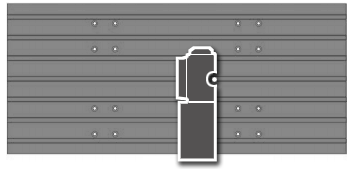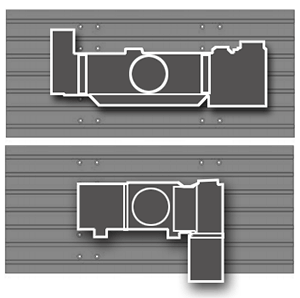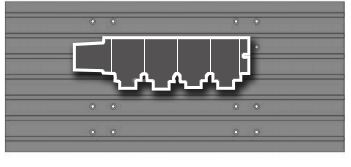JJ Churchill - Be Ye Men of Valour
“Be Ye Men of Valour” — Winston Churchill
Market Bosworth, England – May 1941:
The Hawker Hurricane touches down on the makeshift grass airstrip, bounces gently on its undercarriage, sets down its tail wheel and rumbles to a halt.
Before the aircraft has even stopped the young Royal Air Force officer slides back the glass hood, removes his leather flying hat and goggles and starts to unzip the thick, sheepskin jacket. The morning air, not yet warmed by the summer sun, feels fresh and damp as it floods the cockpit, washing away the heat.
Once free of the aircraft’s close confines, he makes his way to the edge of the field, inching off his gloves as he walks. He crosses the narrow country lane and opens the door of the factory, glancing back at the fighter as it ticks and cools in the still air. He allows himself a contented smile as he considers the means of his commute.
Despite the demands of an intensifying war, the Air Ministry turns a blind eye to this seemingly extravagant use of a service aircraft. Having led his squadron in the Battle of France and the Battle of Britain, Squadron Leader Walter Churchill, they quietly concede, has earned an indulgence or two.
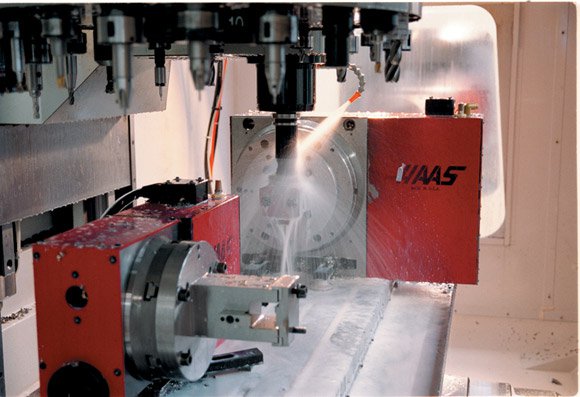
His visit to the factory is as much a matter of duty as routine. As well as serving his country in the air, he has a valuable ground-based contribution to uphold and maintain.
A week earlier, at RAF Cranwell in Lincolnshire, Churchill had witnessed an historical aviation event: the successful maiden flight of Britain’s first jet engine aircraft. The occasion was particularly gratifying, for as well as being a personal friend of the designer, Frank Whittle, Churchill had played a key part in the project: His company, The Churchill Engineering Company, had supplied the compressor blades for the engine.
“The farther backwards you can look, the farther forwards you are likely to see.” — Winston Churchill
Market Bosworth, England – May 2001:
Almost exactly 60 years later, I’m sitting in the first floor meeting room of the renamed JJ Churchill Ltd.
The view from the window is England at its best. The sky is an unusually deep, almost Mediterranean, blue. The undulating Leicestershire countryside is every shade of green, and a gentle breeze carries late spring blossoms from the treetops.
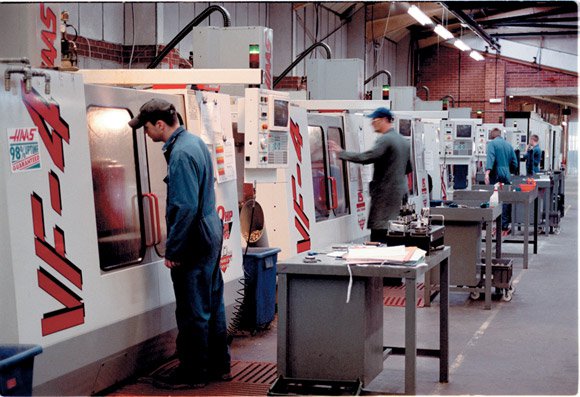
History, like luck and fortune, would appear to accumulate in certain places. More than 450 years before Walter Churchill landed his Hurricane here, these and the surrounding meadows bore witness to a battle that changed the course of English history.
The Battle of Bosworth Field took place on August 22, 1485. It was a bloody fight for England’s throne between York’s King Richard III and Henry Tudor, head of the house of Lancaster. The confrontation culminated in the slaughter of Richard and an end to the War of the Roses. Henry Tudor was crowned King Henry VII.
James Churchill, son of Squadron Leader Walter Churchill, D.S.O., D.F.C., enters the room. An ex-Royal Air Force officer, he is well groomed, precise and effortlessly polite. Hands are shaken, pleasantries are exchanged, seats are taken. I explain the purpose of my visit and what I would like to achieve from our meeting.
“My father was probably the first graduate engineer in England,” Churchill proudly tells me. “In the 1930s he joined aircraft manufacturer Armstrong Sidley as an apprentice. An enthusiastic employee, at 27 years of age he approached senior management and informed them that he would be able to provide a higher quality product in a shorter lead-time if he were to set up his own company. Not only did he ask for their blessing, but he also asked for a number of key men to make it happen. Convinced, the management gave him the backing he sought. On Christmas day 1937, the day I was born,” Churchill notes, “The Churchill Engineering Company was established in Coventry.”
In 1939, when Britain entered the war, The Churchill Engineering Company had already established itself as a valuable supplier to Britain’s aircraft industry. It didn’t take long for Germany to notice the importance of Coventry as the country’s industrial heart, and, in case the employees of Churchill Engineering hadn’t noticed the gathering Blitzkrieg, the Luftwaffe dropped a 1,000 lb calling card through the roof of the factory.
“He’d always wanted a factory in the country,” says Churchill of his father. “So-called ‘shadow’ factories were springing up all over rural Britain, to keep them out of harm’s way. Unlike some, we never moved back to Coventry.”
At the outbreak of war, Walter Churchill was an auxiliary pilot commanding 605 Hurricane squadron for the county of Warwick. A natural leader and a born fighter pilot, he took his squadron to the battle of France with, in the words of James Churchill “some single successes.”
In the long hot summer of 1940 he led his squadron in the battle of Britain, his participation curtailed when he was wounded.
“When he’d recovered,” continues Churchill, “he was given a very interesting task: to form a fighting squadron from a group of North American bush pilots, many of whom had been mercenaries fighting for the Chinese on the Japanese front. This was before Pearl Harbour and before America entered World War II.”
The newly formed squadron became the very first American Eagle Squadron and was the first operational American fighting force in Europe. Walter Churchill, Squadron Leader, was just 31 years old.
“Between postings, my father liked to visit his factory, often landing his Hurricane in an adjacent field. On one occasion he didn’t have enough fuel to fly back to his squadron. He had to scour the local villages.”
Then, in 1942, Churchill was sent to Malta to help the strategically vital outpost fend off a huge Axis assault. As acting Group Captain he led an attack on Sicily, where the Germans were building gliders to ensure that the tenacious Maltese would finally surrender. He was hit by ground fire and died. He was 32 years old, had been married for 6 years and had two children.
“My widowed mother was just 28 years old when she assumed full responsibility for the business,” says Churchill.
“Private enterprise … the strong horse that pulls the whole cart.” — Winston Churchill
James Churchill is more than just custodian of a fascinating family history. An astute businessman and time-served engineer, he and Operations Director John Garner have turned JJ Churchill Ltd into one of Britain’s top aerospace suppliers.
“We machine compressor blades for every Rolls-Royce military engine apart from the Adur, the power plant used in the Jaguar low-level strike aircraft,” says Garner. “We also machine blades for most of the Rolls-Royce commercial jet engines, those used in civilian aircraft, marine applications and power generation.”
Garner, an indefatigable engineer in his early 50s, has more energy than most 30-year-olds. Which is just as well – Garner is the man on the ‘front line,’ charged with making James Churchill’s vision for the future a reality.
“Traditionally, we’ve always been involved in the cold end of the engine,” he says. “This is the front end, where cold air is dragged in and compressed before being mixed with the fuel and ignited. The hot end is a very challenging area. Typically, because of the extreme material requirements, this end tends to be handled by the engine manufacturer or by a few, very specialized suppliers.”
The large blades visible at the front of a ducted fan jet engine are, effectively, a propeller enclosed inside the engine cowling. This propeller, or more correctly fan, is driven by the jet itself, via a shaft that runs through the centre of the engine. The air passes over several rows of rotor and stator blades where it is compressed before being mixed with the fuel.
“We machine the rotor and stator blades. Eighty percent of our work is the stator blades, fixed at the centre, and fixed at the outer edges,” says Garner.
“We supply machined blades for the supersonic Tornado and for the vertical take-off and landing Harrier, amongst others. We also supply for the Rolls-Royce Olympus engine, famously used on Concorde, but also used in marine applications and as an industrial power generation unit,” he states.
The company’s experience with the Olympus engine led to its involvement on the Rolls-Royce Trent project, an all-new engine used in a wide range of commercial aircraft. The Rolls-Royce Trent is particularly innovative: Where traditional jet engines use one rotating shaft, the Trent engine uses two, one inside the other. This additional shaft allows much greater control, allowing the engine stages to rotate at different speeds.
Like all good engineers, Churchill and Garner know that to be secure, an object needs to be supported at a minimum of three points: As well as the aerospace side of the business, the company also supplies components to manufacturers of diesel engines. “A few years back we bought a small engineering company called Peacock & Waller, in Hinckley, not far from here,” explains Churchill. “We’re not a naturally acquisitive company,” he explains, “but this was a great opportunity to bring the right skills and people on board, and gain access to customers such as Caterpillar and Perkins.”
Garner adds, “As well as some additional security, our work with companies such as Perkins has given us a valuable insight into supply-chain management. In fact, the production management processes we use here at JJ Churchill are based on automotive as opposed to aerospace models. We’ve found them to be much more appropriate for the way we work.”
The third ‘point of contact’ is the company’s range of cutting tools. “We met Empire cutting tools in Memphis, Illinois,” says Garner, “and made an agreement to manufacture and market the tools as Churchill Cutting Tools, under license in Europe.” The project has worked extremely well. So well, in fact, that additions to the range, tools designed and developed by Churchill, are being made under license by Empire in the USA.
“Give us the tools, and we will finish the job.” — Winston Churchill
A line of light grey machines with the familiar red logos stretches the length of the Churchill machine shop. Operators, noses pressed against the windows, stand ready and waiting for an M30 and the end of the program.
“As you can see, we concentrate on the VF-4,” states Garner. “The 1.3 meter table allows us to use the HRT-310 at one end and the HRT-210 at the other. That’s our standard package, and we have 7 of them. When I say to Haas UK (the Haas distributor in the UK) that we need another ‘package,’ they know exactly what I mean.
“When we went looking for machines, we wanted fast, low-cost machines that would also give us mobility of labour. This last point is important. We found that by using all the same make and size of machine we’ve removed a psychological barrier with the operators. They move between machines very easily,” he adds. And, with a mischievous smile: “We’ve even had our union representative keen to run five machines simultaneously.”
The forged compressor blades arrive from nominated Rolls-Royce foundries in a close-to-form format. That is, the gas wash area of the blade, the aerofoil section, is almost exactly to size. The leading edge, the trailing edge and the platforms are machined before the blade is encapsulated in a low melting point alloy to form a ‘brick.’ These bricks are common sizes so that a standard fixture can be used for different sized blades.
The brick is held in the HRT-310 rotary table and all of the root fixings are machined. It’s removed from the HRT-310, rotated through 90 degrees and held in an adjacent HRT-210, where the abutment faces and any location holes are machined.
When all of the machining is complete, the blade is broken out of the alloy brick and decontaminated. Some blades have a surface coating applied, but all blades undergo thorough non-destructive testing and inspection before being shipped.
“We machine a variety of materials, including JEHETTE, Rolls-Royce’s unique stainless steel,” adds Garner. “It’s pretty tough, EN58-type material. We also machine titanium. Tolerances are typically 1 to 2 thousands of an inch. The Haas machines cope admirably.”
Before the arrival of the Haas machines, the Churchill machine shop was populated by a number of ageing horizontal machining centres. “The twin pallet changers of the old machines were useful,” says Garner, “but the Haas machines have more than lived up to our expectations: one-fifth the price of the old horizontals and they do the job almost 20% quicker!”
Some of the blades machined by JJ Churchill are heavier than others, requiring different fixtures than the standard type used on the VF-4s. “We’d carried on machining the bigger blades on one of the old horizontals,” says Garner, “then Haas UK suggested we look at the HS-1RP.
“The HS-1RP is approximately half the cost of a similar machine we looked at. It’s tremendous value for the money,” claims Garner. “And, being twin pallet, we’re able to load a job during a machining cycle.”
As other aspects of the company’s operations have grown, Garner was on the lookout for a larger machine. “A little later we also bought a VF-6 vertical machining centre to replace an ageing Korean machine. The parts we’re machining on the VF-6 are the backplate between a diesel power generation engine and the transmission. They’re not particularly heavy, but they are quite big. The VF-6 has plenty of volume.
“We were also running an old Swiss lathe for a high- profile military contract. Delivery was a key part of that contract, and under no circumstances could we afford to take chances. We bought a Haas SL-40 CNC lathe to address this issue, and we now have a machine that is not only reliable but is also big enough to allow us to machine engine rings. Consequently, we can supply the customer with complete compressor blade kits.”
As opposed to machine tool agencies, Haas UK only supplies Haas equipment and support. This is obviously a major plus in the eyes of Garner. “One thing I just cannot live with is a machine from company X, a rotary table from company Y and the control from company Z. I’m a big fan of the one-stop shop.
“Another thing I particularly like about Haas is delivery and installation. Typically, a machine shop will wait and wait and wait until it commits to a new machine. Then it wants it yesterday. We’re a little like that,” he confesses.
“On occasions, when I’ve needed a machine quickly, Haas UK has done everything in their power to get me a machine here. When they do arrive, they just drop clean in. Typically we’ll install a machine and have it cutting metal within 24 hours. I remember the Japanese being able to do this some time back, but even they struggle sometimes. When it comes to installation, Haas UK is consistently quick.
“Let me give you an example: We had a just-in-time job to supply parts for oil coolers to Perkins. The machine was delivered on the Thursday and we delivered the parts on the following Tuesday: Installation, tooling-up, programming and machining in two working days and a weekend! This kind of turnaround is very impressive.”
In fact, it’s all-round speed and quality that define JJ Churchill and continue to open doors to the future. “We’re also involved in the BMW and Rolls-Royce aero engine collaboration,” says Garner, “developing blades for projects in very short lead times. That’s our speciality: Being able to provide a blade kit for an engine very quickly. We aim to be able to kit an engine, just-in-time, in days.”
Garner leans forward. “We have a total quality mentality, and it works: We’re the only Rolls-Royce supplier to have zero defects per million parts. Absolutely no defects at all,” he emphasises. “That’s not just testimony to our processes, but also to the quality, reliability and accuracy of the equipment we use. Rolls-Royce fits the parts straight to the engine. They can’t afford to fit faulty parts.”
“For me,” states Garner, “quality is a company-wide attitude. Quality, delivery and cost are not separate issues. We’re running the Haas machines for more than 109 hours every week, and I need to know they are going to perform from the moment we drop them in.”
History will be kind to me, for I intend to write it
Winston Churchill
JJ Churchill Ltd has been keeping jet aircraft aloft for more than half a century. The ethos of quality, short lead times and engineering expertise championed by Squadron Leader Walter Churchill more than 60 years ago is still valid today, probably more so.
“We’re benchmarking ourselves on a worldwide basis,” says Churchill, “and we seem to be doing pretty well. We’ve had letters from Rolls-Royce and Perkins telling us that we are the best supplier they have. That’s very satisfying.”
“Also,” he continues, “we are regularly and aggressively audited by our customers on such aspects as risk management, delivery performance, quality, etc. Our customers compile and publish league tables so that all of their suppliers can see how they rank compared to one another. We post the league tables on the shop floor so that everyone can see them.”
“It’s almost embarrassing,” adds Garner. “We are consistently outperforming companies who should, quite frankly, be doing a lot better.”
So what does the future hold for JJ Churchill Ltd? James Churchill is acutely aware that when you’re top of the heap, it’s very easy to fall off.
“With our combination of expertise and facilities, project management will be a big part of our future,” he says. “For example, we currently manufacture a major component for a torpedo. Originally, the job was ‘knifed and forked’ by a number of subcontractors. We asked the OEM if we could take a look at the job.
“First we addressed the material issues. Then we looked at the machining, the anodising, etc. Little by little, using project management techniques, we solved all of the problems and manufactured a great product.
“Projects of this nature are great for our engineers,” says Churchill. “They like to have something new and challenging to get their teeth into once in a while, and new machines to work with.”
When one considers the special relationship that JJ Churchill Ltd has historically had with the USA, it seems fitting that many of these machines will come to Market Bosworth from a company on the other side of the Atlantic. A company of men and women, like those at JJ Churchill Ltd, to whom history will be kind, because they are writing it.


